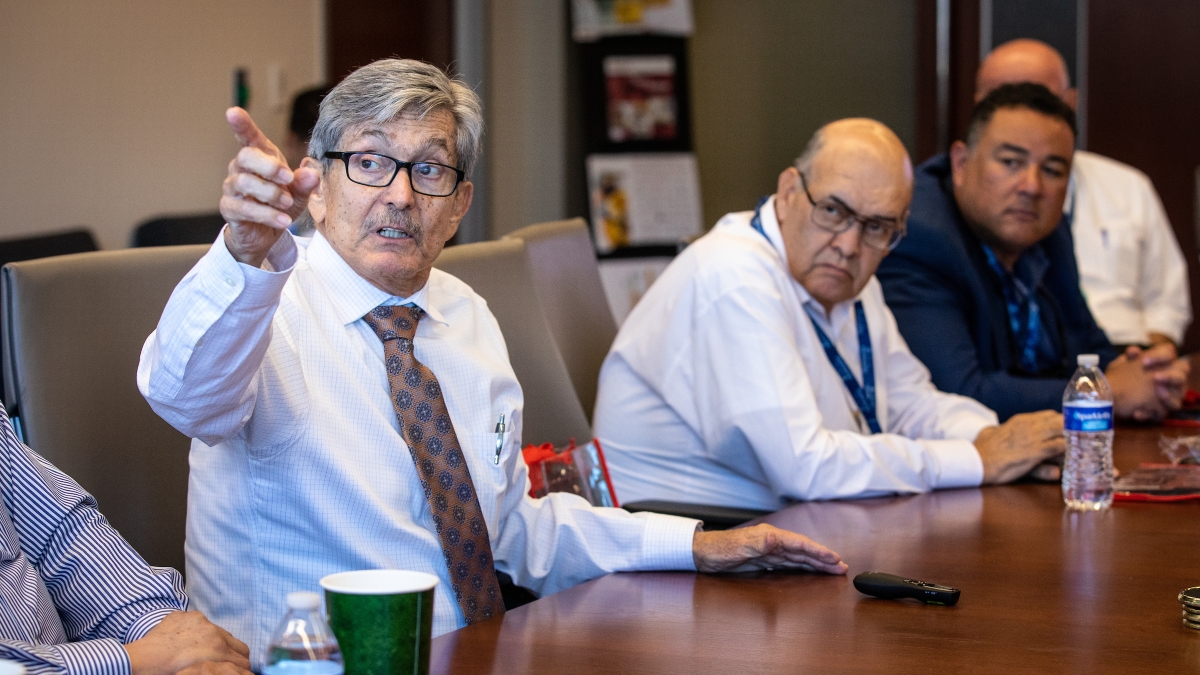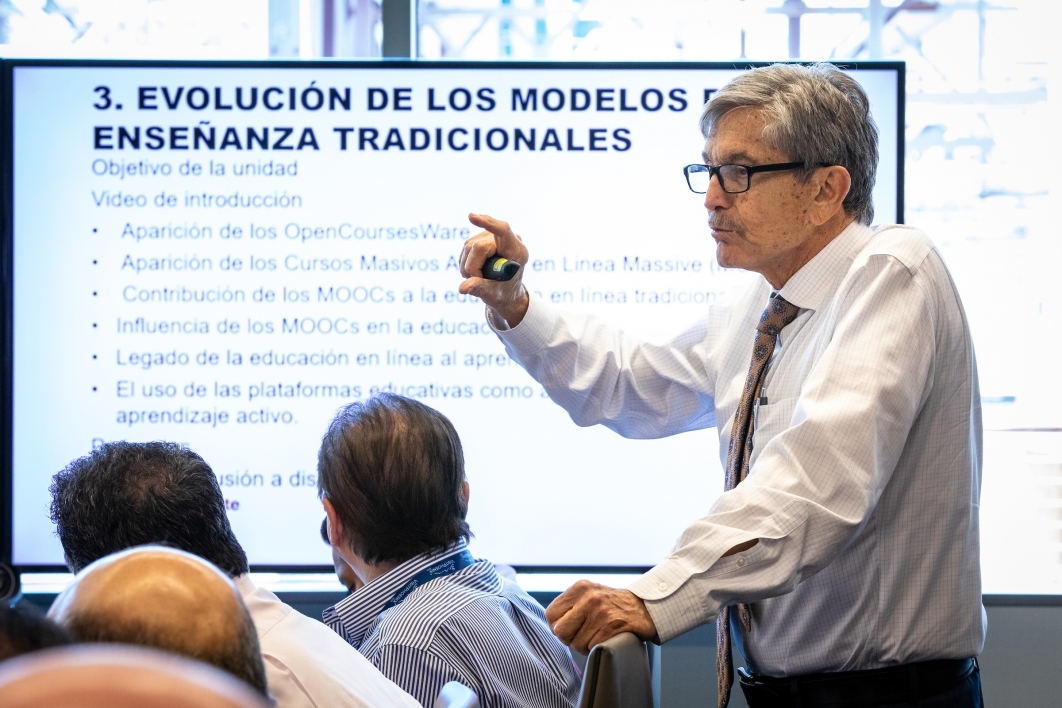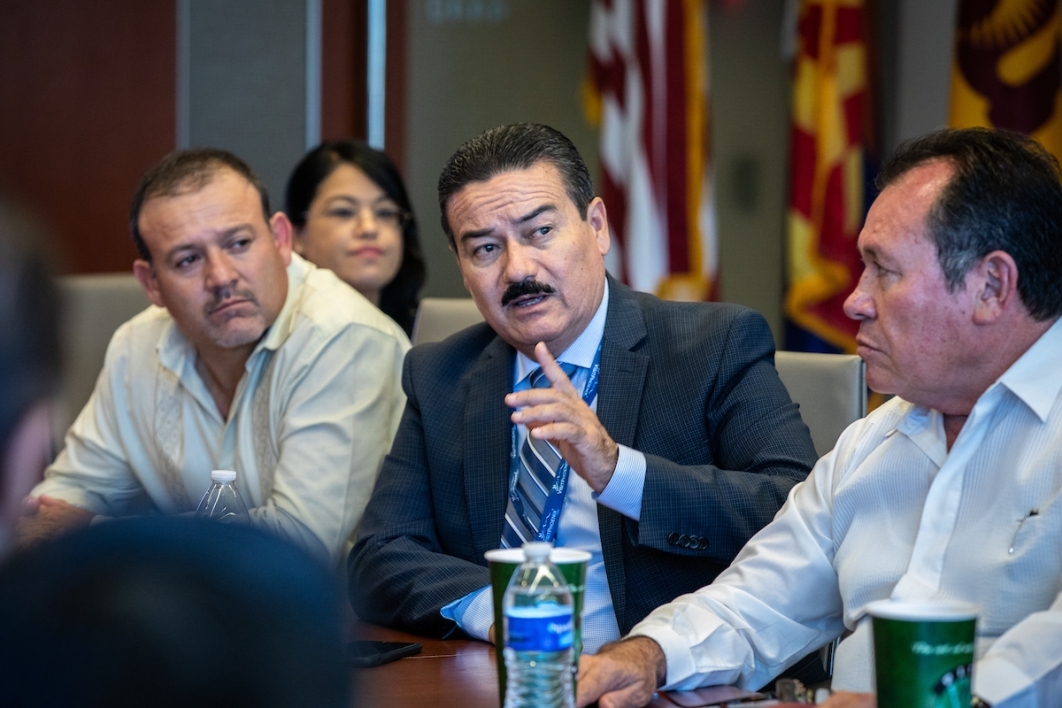ASU course helps Sonoran teachers integrate tech into their classrooms

When Rafael Rangel Sostmann, a special adviser to ASU President Michael M. Crow, first developed his online course to train teachers to better integrate technology in their classrooms, he didn’t imagine that he would launch the course in the middle of a global pandemic.
But on Monday, when he welcomed more than 60 teachers from the Mexican state of Sonora to the course, the importance of its content was no longer theoretical.
“We’re in a crucial moment,” said Rangel Sostmann, who served as president of the Tecnológico de Monterrey, a renowned Mexican university, before coming to ASU.
Over the next several weeks, in the face of the COVID-19 pandemic, adapting educational technology to meet the needs of students will make the difference between leaving those students behind and empowering them to push forward.
Rangel Sostmann’s digital course represents a joint initiative between ASU and the Sonoran secretary of education and culture. Onésimo Mariscales Delgadillo, Sonora’s deputy secretary for secondary and higher education, remotely joined the first session of the course, where he highlighted the importance of the binational teamwork on the initiative.
The teachers taking the class come from 20 different education institutions in the state of Sonora, and they work with both high school and higher education students. For Rangel Sostmann, personalized and adaptive education tools are key to making sure students stay in school, and many of the teachers hope the course will help them reduce dropout rates.
Education technology, Rangel Sostmann said, should make both teachers and students more independent, more autonomous, and meet them where they are.
Meeting students and teachers where they are means avoiding introducing technology for technology’s sake and instead thinking critically about the needs that exist in a classroom and the most appropriate tools to address those needs. It means recognizing that not all students have access to computers and reliable internet, and asking, "How can we reduce barriers to access?" In that process, our nearly ubiquitous cellphones are a huge asset, Rangel Sostmann said.
Globally, the need for social distancing amid the COVID-19 pandemic has forced educators to rapidly move their course content online. At its worst, that type of transition can create confusion and frustration — but at its best, it represents a unique opportunity.
When Rangel Sostmann first started developing the course, it was meant to help teachers better integrate technology into their in-person classes. Now, the class will also consider how to effectively use technology in online classes — moving beyond the obvious to consider how to make online instruction more personalized and dynamic, all at scale.
ASU is working with universities across Mexico to ensure smooth transitions to online instruction and to promote educational accessibility more broadly.
Assisting in these transitions is important, said Paola Garcia, the director of Mexico and Latin America Initiatives for the Office of University Affairs, “in order to meet the needs that have become urgent for many of us.”
ASU is committed to helping universal learners — people like Rangel Sostmann’s students — who recognize the need to approach learning as a lifelong journey in a rapidly changing, technology-driven world.
Last week, the university introduced ASU for You, an initiative aimed at supporting universal learners. Launched “at a time when the world faces unique challenges that demand innovation and adaptation”, ASU for You is a “flexible and growing set of digital educational assets for people of all ages and at all stages of their educational, career or lifelong learning journey — wherever in the world they may be.”
Another example of the binational effort to promote educational accessibility is the Acceso ASU program, a transfer pathway that allows DREAMers and other Spanish-speaking students to take online courses at four Mexican university partners, at a lower cost, and have credits validated toward a degree at ASU.
Together, the initiatives show that while we might be physically separated for a while — both by closed borders and closed classrooms — we are actually more connected than ever.
Written by Mia Armstrong
Top photo: Rafael Rangel Sostmann, special adviser to ASU President Michael M. Crow, briefs online education to a Sonora secretary of education delegation in June 2019 in Tempe. Rangel Sostmann taught a digital education class online March 23, 2020, to 60 Sonoran teachers in case they need to transition to virtual learning due to the COVID-19 pandemic. Photo by Charlie Leight/ASU Now
More Arts, humanities and education

ASU graduate education programs are again ranked among best
Arizona State University’s Mary Lou Fulton College for Teaching and Learning Innovation continues to be one of the best graduate colleges of education in the United States, according to the…
ASU FIDM students to see their designs on the runway at Uncertainty Fashion Showcase
Nola Hill is perfecting every stitch of her fashion design collection, which she started conceptualizing last summer.She is among 30 ASU FIDM fashion design students who have been working late into…

ASU+GSV Summit brings experts together to discuss innovation in education
This week, Arizona State University President Michael Crow and other university leadership joined education and learning experts from around the globe at the ASU+GSV education technology summit in…



